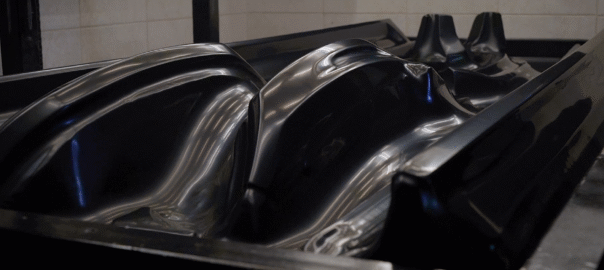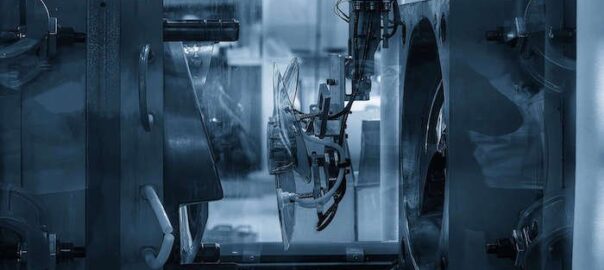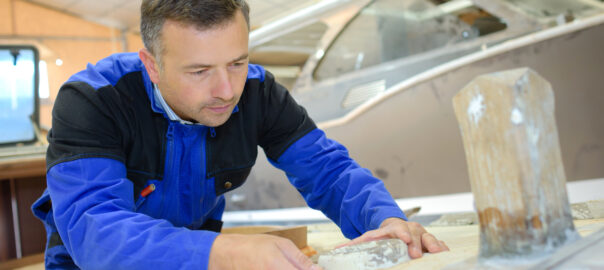In industrial and manufacturing settings, machines with moving components such as motors, bearings, shafts, belts, and pulleys pose significant safety risks if left exposed. Safety covers designed with thermoformed plastic can effectively protect workers from these hazards while adhering to OSHA standards, particularly 29 CFR Part 1910, which specifies requirements for machine guarding.
Key Considerations for Machine Safety Covers Using Thermoformed Plastic
For an effective design, each type of moving part requires special attention to both material selection and structural design. Here’s how OSHA standards guide the process for designing safe, durable thermoformed plastic covers:
1. Material Selection for Strength and Impact Resistance
OSHA’s 1910.212 on machine guarding emphasizes that guards must prevent worker access to moving parts. Thermoformed plastic is an excellent material choice because it’s lightweight, customizable, and impact-resistant, which is crucial for protecting workers from sudden breaks or debris.
-
Recommended Plastics: Polycarbonate is ideal for high-impact situations near motors or belts, as it offers a superior balance of durability and transparency. Acrylic and ABS may also be suitable for less rigorous applications.
-
Impact Testing: Ensuring the plastic meets ASTM D256 (Izod Impact Strength) standards is essential, as this helps confirm that the cover can withstand impacts without breaking or shattering. This testing assures compliance with OSHA’s requirements for preventing access to hazardous parts.
2. Covering Rotating Shafts and Exposed Bearings
Rotating shafts and bearings can quickly snag clothing or entrap limbs. OSHA guidelines require that guards prevent accidental contact, especially with rotating parts. Thermoformed plastic covers offer versatile design solutions for these hazards.
-
Full Enclosures for Shafts: Where feasible, full enclosures should surround rotating shafts, designed with sufficient clearance to prevent entanglement while allowing for safe observation.
-
Ventilation for Bearings: Bearings generate frictional heat, so the plastic cover should be vented where possible to prevent overheating. Strategically placed slits or perforations provide airflow while maintaining a strong barrier.
3. Safeguarding Belts and Pulleys with Shatterproof Covers
Belts and pulleys pose a unique challenge due to their continuous motion and potential for material wear. OSHA’s 1910.219 standard on mechanical power-transmission apparatus requires guards on exposed belts and pulleys.
-
Transparent Guarding: Clear, shatter-resistant materials allow operators to monitor belts without removing the cover. Polycarbonate is a preferred choice due to its high impact resistance, essential for preventing injuries from snapped belts or displaced pulleys.
-
Reinforced Corners and Edges: To enhance durability in high-stress areas, consider thicker edges or reinforced corners. This design approach helps prevent premature wear, especially around belt-driven machinery that experiences frequent vibrations.
4. Guarding Motors and Electrical Components
Motors are another critical component requiring secure guarding. Safety covers must not only prevent accidental contact but also accommodate airflow to avoid overheating. 1910.303 on electrical systems emphasizes that guards should allow for necessary ventilation around motors and electrical components.
-
Perforated Thermoformed Plastic Covers: Perforations or ventilation slots allow airflow while maintaining full coverage. This is especially important for electric motors, which rely on air circulation for cooling.
-
Modular Design for Motor Access: In maintenance-heavy settings, modular or quick-release covers allow easier access to motors for inspection, repair, or replacement without compromising safety.
5. Flexible Design for Accessibility and Ergonomics
The thermoformed plastic design should balance safety with ease of access, especially for parts that require frequent maintenance. OSHA’s 1910.147 standard on lockout/tagout (LOTO) highlights the need for easy access to machinery components while ensuring accidental startups are prevented.
-
Quick-Release Latches and Hinges: Using latches or hinged designs allows workers to access machine components easily while ensuring secure coverage during operation. For example, a quick-release panel on a cover for a motor allows fast inspection without detaching the entire guard.
-
Snap-On Covers for Bearings and Shafts: For moving parts like bearings, snap-on covers can be designed to fit snugly yet allow quick removal for lubrication or replacement.
6. Environmental Resistance and Durability for Machine Enclosures
Industrial environments can expose plastic covers to harsh elements, including oils, chemicals, and UV light. According to 1910.94 and 1910.1000, machine guards must withstand exposure to potential contaminants to maintain integrity over time.
-
Chemical-Resistant Coatings: For machinery exposed to lubricants, oils, or cleaning chemicals, the plastic should be treated with a protective coating. Polycarbonate and ABS with anti-corrosion treatments can provide the necessary durability.
-
UV-Stabilized Materials for Outdoor Machinery: Machines operating outdoors or near windows may require UV-resistant plastic, ensuring guards do not become brittle or discolored due to prolonged sun exposure.
7. Safety Labeling and Signage for Hazard Awareness
Clear labeling of hazards is crucial for effective machine safety. OSHA’s 1910.145 standard on safety signs and tags emphasizes the importance of visible warning labels on guards.
-
Durable Labels on Flat Surfaces: Labels indicating hazard zones, maintenance instructions, or lockout points should be placed on flat, prominent areas of the cover. Laminated or engraved labels resist wear from cleaning and chemicals.
-
Color Coding for Visual Cues: Color-coded sections on the guard can help operators quickly identify different components. For instance, red for danger zones and green for maintenance panels can improve operational safety.
Additional Design Tips for Thermoformed Safety Covers on Machinery
While OSHA compliance forms the foundation of safety cover design, practical design considerations can improve the functionality and ease of use of thermoformed plastic guards:
-
Prototyping for Fit and Functionality: Prototyping allows engineers to assess the fit of the cover on actual machinery and receive feedback from operators. Adjustments can be made to improve the ergonomic design, visibility, and accessibility.
-
Modular Assembly for Customization: Modular cover designs allow for mix-and-match sections that can be tailored to fit different types of machinery, such as various motor or pulley configurations, without redesigning the entire guard.
-
Anti-Fogging and Scratch-Resistant Coatings: For guards covering moving parts that need close monitoring, anti-fog and scratch-resistant coatings maintain visibility and durability over time.
Conclusion: Effective Machine Guarding with Thermoformed Plastic
Thermoformed plastic safety covers, when designed according to OSHA guidelines, offer a powerful combination of protection, durability, and cost-effectiveness for machine guarding. By prioritizing material strength, environmental resistance, and functional design, engineers can create thermoformed guards that meet OSHA’s stringent requirements while enhancing workplace safety.
For industries reliant on machinery with moving parts, including motors, bearings, shafts, and belts, the right safety cover can reduce the risk of accidents and increase operational efficiency. Integrating thermoformed plastic safety standards from the beginning of the design process not only ensures compliance but also supports a proactive approach to workplace safety and productivity.



